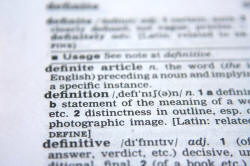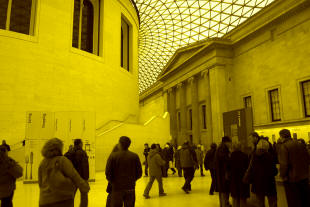Phrase structure
 |
 |
Defining terms |
A phrase is a small group of words which together form a single
unit. A phrase acts grammatically in exactly the
same way as a single word. For example, in:
I like fish
the word fish is the
object of the verb like and is a single-part lexeme.
In:
I like well-cooked, boneless
fish
the phrase well-cooked boneless fish
is still functioning as the object of the verb like but is
a four-word phrase.
We think in phrases so phrase
structure is an important area to analyse.
 |
Different types of phrases |
In the section on word class, you encountered the main functions
of lexemes. Phrases perform very similar functions so will be
easy to identify.
In what follows, you need to understand that the term phrase
can be used for a single lexeme or a combination of lexemes.
The lexeme table is a noun but it is also a noun phrase.
In what follows, use your knowledge of the functions of lexemes to
decide what the parts in green
bold are doing in these sentences. When you
have made up your mind, click on the
![]() to reveal some comments.
to reveal some comments.
|
The young woman
bought the car |
The young woman
is a noun phrase.
It is possible to replace it with a single noun such as Mary. It is functioning as a single noun and the subject of the verb bought. (The subject of a verb is the person or thing which performs the action or is in the state.) |
| She
almost certainly
paid too much |
almost certainly
is an adverb phrase.
It is possible to replace it with a single adverb such as quickly. It is functioning to tell us the speaker's attitude to the verb paid. |
| She
should have paid
less |
should have paid is a verb phrase.
It is possible to replace it with a single verb such as paid. It is functioning to tell us two things: a) the speaker's attitude to the verb (using should) b) the time in which the verb is understood (past, in this case). |
| She took the
money from the bank |
from the bank
is a prepositional phrase.
The preposition is from and the bank is called the prepositional complement or object. It is functioning to link the verb with the place and explain where she took the money from. |
| She decided it
was a beautiful and
affordable car |
beautiful and
affordable is an adjective
phrase.
It is possible to replace it with a single adjective such as nice. It is functioning to modify the noun car. |
| She drove
her brand-new red motor
car very carefully |
her brand-new red
motor car is another noun phrase.
It is possible to replace it with a single noun or a pronoun such as it. It is functioning as a single noun and the object of the verb drove. (The object of a verb is the thing or person on which the verb acts.) |
 |
Embedding |
Phrases can be embedded within phrases, like this:
- the young woman
- This is analysed above as a noun phrase (and it is) although it contains an adjective phrase (young). In the same way, the noun phrase her brand-new red motor car contains an embedded adjective phrase.
- should definitely have paid less
- This is called a verb phrase (and it is) but it contains two embedded adverb phrases: definitely and less. Remember that phrases in this analysis can be single words. A verb phrase strictly seen contains only verb forms so the verb phrase is should have paid and the adverbials, definitely and less modify the verb phrase. For teaching purposes, because verb phrases often contain embedded adverbials, it makes sense to treat them as single units.
- from the bank
- This is a prepositional phrase and has a noun phrase (the bank) embedded in it acting as its complement.
Embedding is common. We frequently embed adjective phrases inside noun phrases and adverb phrases inside verb phrases and noun phrases are almost always seen when a preposition is used at all, helping to make up the prepositional phrase.
 |
Heads, pre-heads and post-heads of phrases |
One key idea to understand about phrases is the Head because this is
the central concept of the phrase.
For example:
- The young woman in red
- The lexeme woman is the Head of this phrase. There is a pre-head (the young) and a post-head (in red). We say that the noun is pre-modified, with a determiner and an adjective, and post-modified, with a prepositional phrase.
- certainly bought hurriedly
- The verb bought is the Head of this verb phrase, in fact, the phrase only consists of the single word. It is pre-modified by an adverb phrase (certainly) and post-modified by another one (hurriedly).
- the red car with the yellow roof
- The noun car is the Head of this phrase. The pre-head modifier is a determiner plus an adjective, the red. The post-head modifier is a prepositional phrase, with the yellow roof.
Phrases can sometimes become separated but the analysis of what is the Head, what is the pre-head and what is the post-head stays the same. Like this:
The young woman in red certainly bought the red car with the yellow roof hurriedly.
Here, the adverb hurriedly is the post-head modifier of the verb phrase but it has become separated from the verb and sent to the end of the sentence.
Phrases can only have one Head but they can have
many pre- and post-head elements. For example, can you analyse
this? Find the Heads of the phrases and then identify the pre-
and post-head modifiers.
Click here when you have done that.
The old man travelling by bicycle, exhausted and unhappy at the end of his journey through the county happily arrived at his hotel eventually.
It looks like this.
Noun phrases in red,
prepositional phrases in black,
verb phrases in green,
adjective phrases in orange,
Heads in bold:
The old man, exhausted and unhappy
at the end of
his journey through the
county happily
arrived
at his hotel
eventually.
- The first noun-phrase Head is man and that is pre-modified with the old and post-modified by the adjective phrase exhausted and unhappy.
- The verb phrase Head is arrived and that is pre-modified by happily and post-modified by the prepositional phrase at his hotel and the adverb phrase eventually. It is also pre-modified by the prepositional phrases at the end of his journey through the county.
- There is a second noun-phrase Head, journey, and that is pre-modified by the determiner his and post-modified by the prepositional phrase through the county.
 |
Constituents of phrases |
When analysing phrases, we need to understand which bit is modifying
what. For example, in the sentence:
She bought the car with the red roof
it is clear that with the red roof post-modifies the Head
car. You can't say
She bought with the red roof
so the prepositional phrase obviously modifies the car.
However, in
She photographed the dog in the garden
it is not so clear:
Was the dog in the garden?
Was she in the
garden?
Were they both in the garden?
We can say
In the garden, she photographed the dog
and
It was the dog in the garden that she
photographed
and the meaning becomes clear.
If in the garden modifies the Head dog it is the dog which was
in the garden and she could have been outside the garden, in
the house or in the road, for example. She could have been in a
low-flying aircraft for all we know.
If in the garden modifies the verb phrase photographed,
on the other hand, we know that the action took place there and that the
dog was also in the garden or the preposition would have been from
(She photographed the dog from the garden).
All this means that we have to be clear what the constituents of the
phrases are. Either it is
Noun phrase as the object of the verb: the dog in the garden
or
Verb phrase (post modified by a prepositional phrase): photographed in the garden
She spoke to the man from the big house on the corner.
What are the two possible meanings and how does this change the
analysis?
Click here when you have your answer.
If
the verb phrase is the Head
spoke and post-modified by the prepositional
phrases from the big house on the
corner, then she was in the house. That is
where the speaking came from.
If the noun phrase is the Head
man post-modified by the prepositional phrases
from the big house on the corner
then she and he could have been anywhere. The prepositional
phrases tell us where the man lived or came from.
 |
Learn more about: |
 |
Take a test |
To make sure you have understood so far, try
a very short test of your knowledge of phrase
analysis.
Use the 'Back' button to return when you have done that.
If you got that all right, it is safe to move on.
The next part of this section considers how clauses work in English. Click here to go on.
